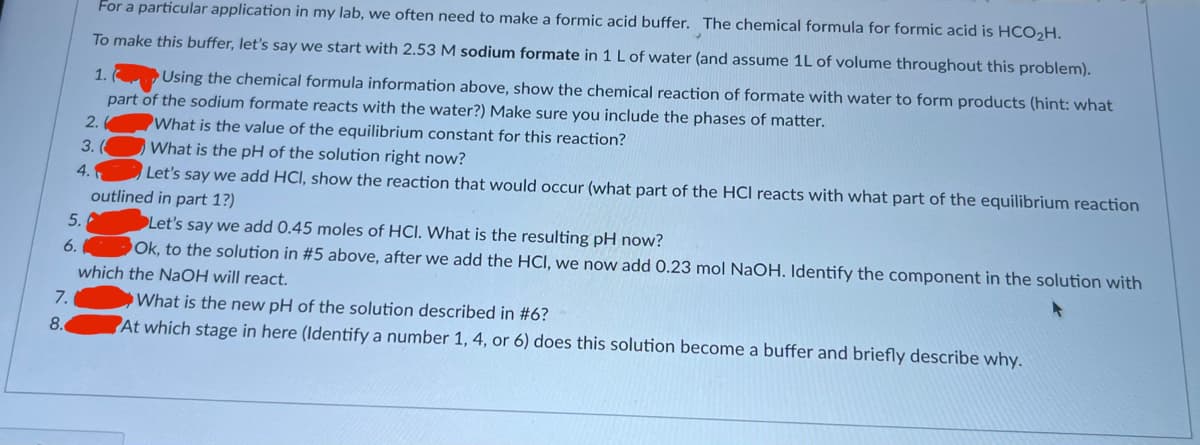ical formula for formic acid is HCO₂H. To make this buffer, let's say we start with 2.53 M sodium formate in 1 L of water (and assume 1L of volume throughout this problem). 1. Using the chemical formula information above, show the chemical reaction of formate with water to form products (hint: what part of the sodium formate reacts with the water?) Make sure you include the phases of matter. 2. What is the value of the equilibrium constant for this reaction?
Ionic Equilibrium
Chemical equilibrium and ionic equilibrium are two major concepts in chemistry. Ionic equilibrium deals with the equilibrium involved in an ionization process while chemical equilibrium deals with the equilibrium during a chemical change. Ionic equilibrium is established between the ions and unionized species in a system. Understanding the concept of ionic equilibrium is very important to answer the questions related to certain chemical reactions in chemistry.
Arrhenius Acid
Arrhenius acid act as a good electrolyte as it dissociates to its respective ions in the aqueous solutions. Keeping it similar to the general acid properties, Arrhenius acid also neutralizes bases and turns litmus paper into red.
Bronsted Lowry Base In Inorganic Chemistry
Bronsted-Lowry base in inorganic chemistry is any chemical substance that can accept a proton from the other chemical substance it is reacting with.

Step by step
Solved in 2 steps with 2 images


